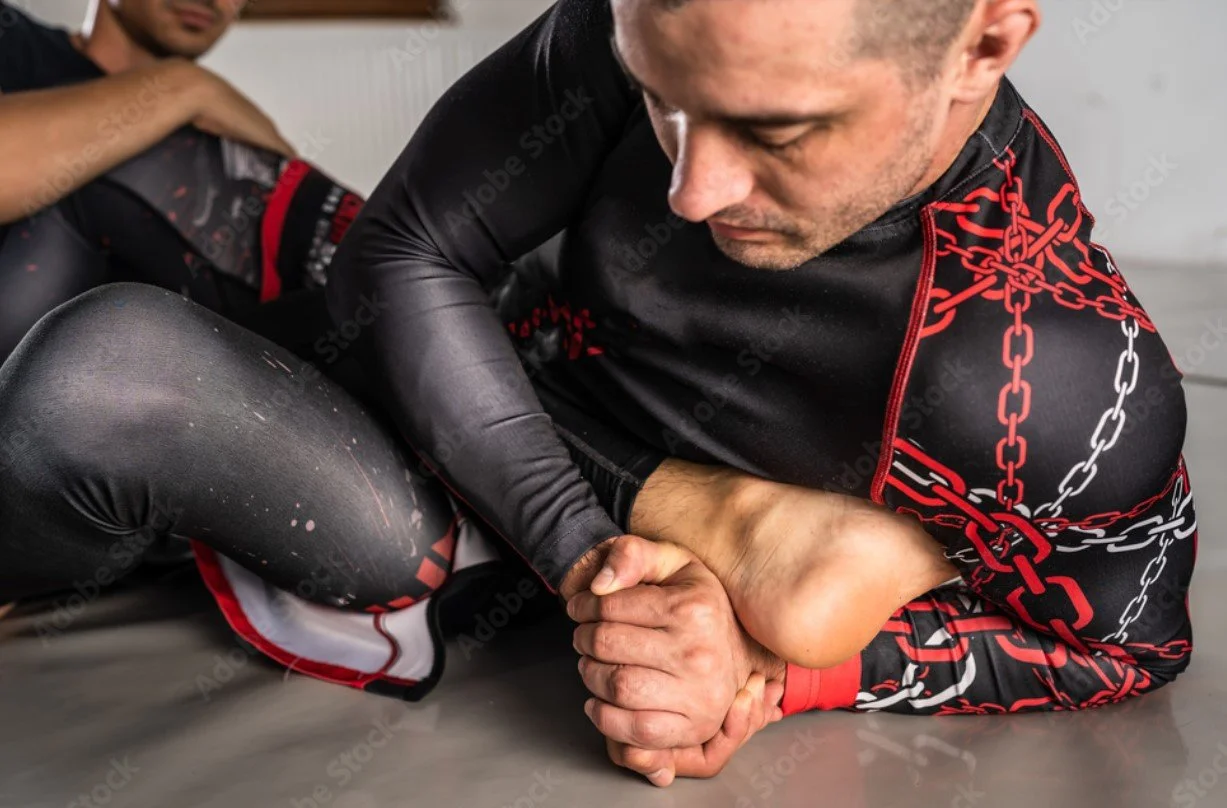Knee Injuries from a Heel Hook
As a BJJ athlete there are so many injuries that can occur. It’s part of the game, and in a sick twisted way…that’s why we love it!
To list out all the possible knee injuries that can occur from submissions or from training will take a longgg time and multiple blog posts.
However, what we can do at Natural Movement Physio for this blog post is break down the mechanics of the dreaded ‘Heel Hook’.
What is a heel hook you say?
There are so many variations of the Heel Hook and so many intricate details so I don’t want to start comment wars saying “That’s not how you do it! 😡” etc.
But for the purpose of explanation, let’s suppose that this is the definition of a heel hook: A Heel Hook is where the person on the bottom has both their legs on either side of their opponent with their legs clamped.
With a clasped palm to palm grip, the heel of the opponent is isolated and secured between your torso and forearm. A twisting motion is then applied.
Best case scenario your opponent or training partner taps or the dreaded “POP” sound is heard.
How does the injury occur?
Musculoskeletally speaking (not a word I know), the above image are the most common structures involved in any knee injury, not just limited to BJJ.
Different heel hooks have different breaking mechanics, so therefore different structures are involved.
With the outside heel hook, the ligaments of the ankle may also be sprained as well as the Lateral Collateral Ligament (The ligament that is on the outside of your knee).
Inside heel hooks are much more catastrophic, there is less torque on the ankle and therefore the structures in the knee absorb most of the force. The PCL and ACL are ligaments that prevent the knee from rotating.
The inside Heel Hook produces so much rotational force on the knee that it may lead to sprains or even ruptures. The MCL (the ligament located towards the inner side of the knee) may also be damaged in that way.
With so much rotational torque generated, in some cases the meniscus may also be damaged.
The meniscus has functions as a shock absorber in high impact activities.
So, you can imagine the force it would take to damage this structure!
This post is already lengthy enough as it is, but stay tuned for upcoming blogs where we’ll discuss possible treatment and rehab options if you do sustain a knee injury from BJJ or other activity.





